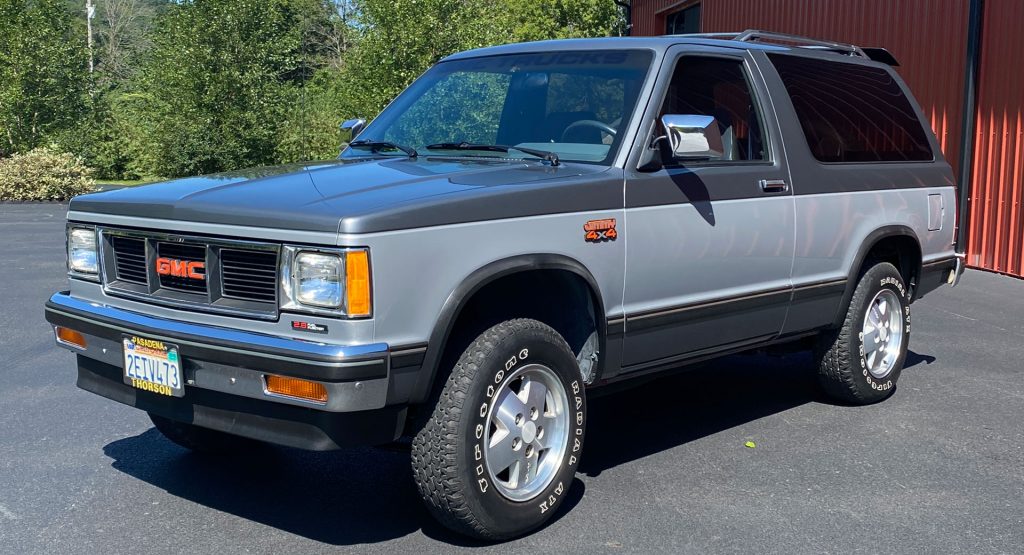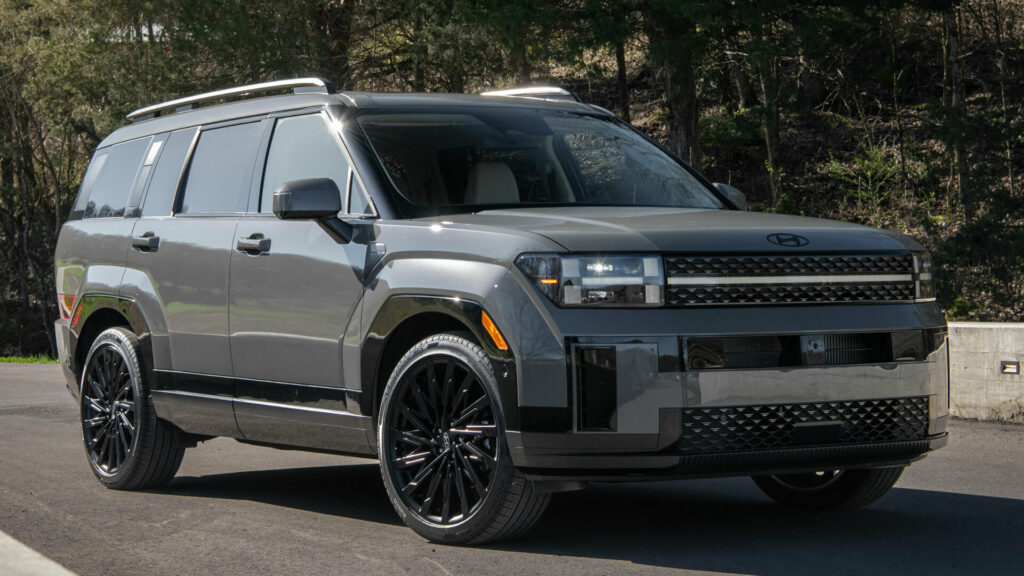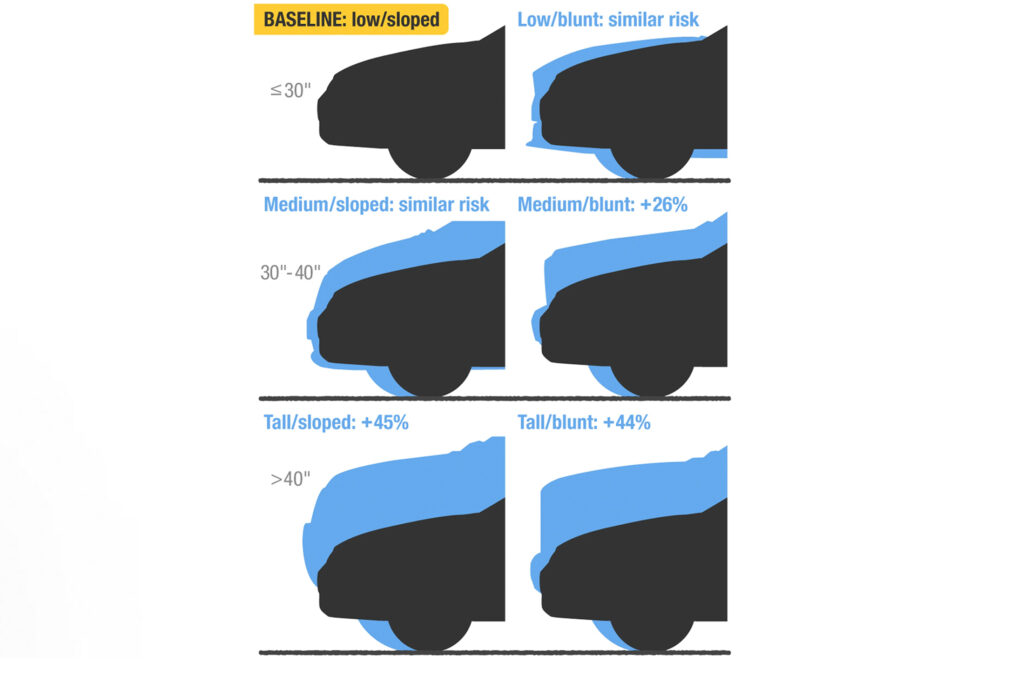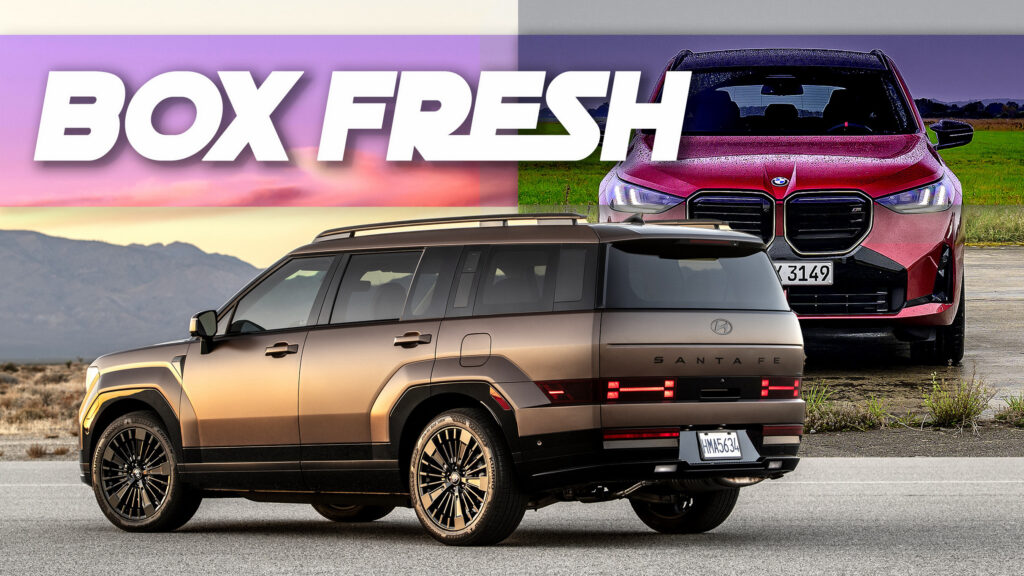- The latest wave of SUVs and crossovers are rejecting curves and car-like faces for boxy lines and square jaws.
- Examples of recently square-ified SUVs and crossovers include the Subaru Forester, Ford Kuga/Escape and the 2026 Honda Passport.
- In parallel to the boxy design trend, and seemingly at odds with it, the US government is pushing for increased pedestrian safety.
Sport utilities are looking more utilitarian than they have in years. If you’ve kept your eye on the new SUVs and crossovers coming through over the past few seasons, you won’t have failed to notice that curves are out and boxy forms are in.
This trend doesn’t just apply to brand new models like the 2025 Subaru Forester that debuted earlier this year looking even more angular than before, but to facelifted models like the updated Ford Kuga/Escape. In both cases the SUVs’ automakers have moved away from car-like front-end treatments and to a more traditional square-jawed SUV face.
More: Honda’s New 2026 Passport Is Desperate To Be Taken Seriously As An Off-Roader
It’s easy to see why SUV design has shifted in this direction. First, there’s the subtle retro influence of SUVs from the late 1980s and early 1990s, a period whose vehicles are hot right now. You only need look at the success of the Radwood scene for proof of that. And in case you’d forgotten how angular SUVs were in the early 1990s, this period seven-vehicle Car and Driver comparison test serves as a good reminder. The wheels and gauges are the only things that aren’t square.
SUVs discovered curves and carving
SUVs back then used their boxy styling to signal their toughness long after many cars had embraced curves. The problem with many old SUVs, though, was that they drove like trucks, usually because they were trucks underneath. But then a new generation of SUVs arrived with car platforms and car-like driving manners and refinement, and they increasingly used car styling cues to reinforce that difference between themselves and older body-on-frame SUVs which largely stuck to the classic boxy shape.

With the addition of space-robbing sloping rear windows on road-biased models, the Sport in SUV has definitely felt more like a reference to sports cars than activity sports in recent years. But now automakers seem to want to project the image of toughness and no-nonsense practicality of old-time SUVs again.
And they’ve been doing that first by offering more and more off-road-focused trims like Subaru’s Wilderness series and Honda’s Trailsport line, and secondly, by altering the shape of their SUVs. Some sport-utilities, the big body-on-frame truck-based bruisers, have never strayed too far from the decades-old boxy look, but it’s now caught on again across the industry.

Boxy designs prompt pedestrian safety fears
This trend towards upright front facias and high-set hoods, however, comes at a time when US regulators appear to want car design to go the other way. Pedestrian impact regulations already help steer the way cars on sale in Europe look – it’s one of the reasons the Tesla Cybertruck can’t be sold there – and America is now following in its footsteps.
Related: NHTSA Proposal Could Radically Change Car And Truck Designs
The NHTSA says pedestrian deaths increased by 57 percent between 2013 and 2022, the majority of those circa-7,500 annual fatalities involving large trucks and SUVs which make up the majority of auto sales. And an Insurance Institute of Highway Safety (IIHS) study found that vehicles with hoods greater than 40 inches (1,020 mm) high and with a blunt front end have a 44 percent greater chance of killing any pedestrian they strike.

Proposals aimed at reducing head injuries arising from collisions include making new vehicles pass head-to-hood impact tests with both adult and child dummies. The Biden Administration thinks the move could save 67 lives a year.
Are you a fan of the boxy, square-nosed SUV design trend? Or is it just making them all look the same and the roads less safe? Take a look at the before and after pics below and let us know whether the crackdown on curves and the obsession with flat fascias and high hoods has been a success.
BMW X3

Chevrolet Traverse

Ford Kuga/Escape

Hyundai Nexo

Hyundai Santa Fe

Subaru Forester





